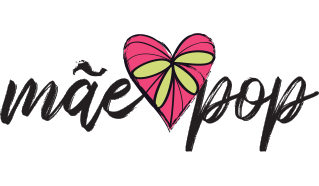A amamentacão exclusiva até 6 meses de idade possui muitas vantagens, tanto para mãe quanto para o bebê.
Nos primeiros 6 meses de vida, a amamentação exclusiva é fator determinante para que o bebê receba muitas vantagens. O aleitamento materno exclusivo até 6 meses de idade é o mais indicado para promover saúde e um bom desenvolvimento para o bebê.
Os benefícios da amamentação exclusiva até os 6 meses de idade estão bem documentados por pesquisas e estudos científicos a muitos anos.
Bebês amamentados por 6 meses estão mais protegidos contra infecções gastrointestinais do quê bebês que iniciam a introdução alimentar a partir dos 3/4 meses de idade.
Não há benefícios em iniciar alimentos sólidos para o bebê antes dos 6 meses de idade. As orientações, devem sempre ser adaptadas a realidade de cada família.
Vantagens do aleitamento materno exclusivo para mãe e bebê:
- O bebê tem menos chances de desenvolver problemas digestivos, respiratórios, pneumonia, meningite e síndrome da morte súbita infantil
- A mãe que amamenta até 6 meses ou mais se recupera mais rápido no pós parto, seu útero com as contrações causadas pela amamentação volta ao tamanho anterior de forma mais rápida também
- A amamentação exclusiva causa a liberação de hormônios relaxantes como ocitocina e prolactina na mãe e consequentemente confortam o bebê.
- Bebês amamentados exclusivamente tem um risco reduzido de 50% de desenvolver infecções de ouvido como otite
- Não há mamadeiras para lavar ou carregar, muito menos problemas de constipação no bebê causados por uma fórmula infantil
- O estômago do bebê amamentado até 6 meses de idade produzem anticorpos que o revestem e protegem contra infecções
Saiba sobre estes e mais benefícios da amamentação exclusiva e porque continuar neste outro artigo também >> Amamentação até 6 Meses: Benefícios e Porque Continuar
E aqui >> Aleitamento materno exclusivo: o que isso realmente significa?
A amamentação exclusiva por 6 meses pode deixar dúvidas sobre 3 pontos que esclareço abaixo:
- Infecções gastrointestinais
- Doença celíaca
- Alergias
- Aceitação de novos alimentos
1. Lancet Breastfeeding Series Group. Breastfeeding in the 21st century: epidemiology, mechanisms, and lifelong effect. Lancet 2016; 387: 475–90. [PubMed][CrossRef]
2. Helsedirektoratet. Nasjonal faglig retningslinje for spedbarnsernæring. Oslo: Helsedirektoratet, 2016. https://helsedirektoratet.no/retningslinjer/spedbarnsaernering (26.4.2019).
3. Kramer MS, Kakuma R. Optimal duration of exclusive breastfeeding. Cochrane Database Syst Rev 2012; 8: CD003517. [PubMed]
4. Scientific Advisory Committee on Nutrition (SACN). Feeding in the First Year of Life. London: UK Government, Public Health England, 2018. https://assets.publishing.service.gov.uk/government/uploads/system/uploads/attachment_data/file/725530/SACN_report_on_Feeding_in_the_First_Year_of_Life.pdf (26.4.2019).
5. Fewtrell M, Bronsky J, Campoy C et al. Complementary Feeding: A Position Paper by the European Society for Paediatric Gastroenterology, Hepatology, and Nutrition (ESPGHAN) Committee on Nutrition. J Pediatr Gastroenterol Nutr 2017; 64: 119–32. [PubMed][CrossRef]
6. Szajewska H, Shamir R, Chmielewska A et al. Systematic review with meta-analysis: early infant feeding and coeliac disease–update 2015. Aliment Pharmacol Ther 2015; 41: 1038–54. [PubMed][CrossRef]
7. Horta BL, Victora CG. Short-term effects of breastfeeding: a systematic review on the benefits of breastfeeding on diarrhoea and pneumonia mortality. Geneva: World Health Organization, 2013. https://apps.who.int/iris/bitstream/handle/10665/95585/9789241506120_eng.pdf;jsessionid=A3ABB02579F54860E314B8CD012B1632?sequence=1 (26.4.2019).
8. Ballard O, Morrow AL. Human milk composition: nutrients and bioactive factors. Pediatr Clin North Am 2013; 60: 49–74. [PubMed][CrossRef]
9. Kramer MS, Guo T, Platt RW et al. Infant growth and health outcomes associated with 3 compared with 6 mo of exclusive breastfeeding. Am J Clin Nutr 2003; 78: 291–5. [PubMed][CrossRef]
10. Bruun T, Salamanca BV, Bekkevold T et al. Burden of rotavirus disease in Norway: Using national registries for public health research. Pediatr Infect Dis J 2016; 35: 396–400. [PubMed][CrossRef]
11. Størdal K, Lundeby KM, Brantsæter AL et al. Breast-feeding and infant hospitalization for infections: Large cohort and sibling analysis. J Pediatr Gastroenterol Nutr 2017; 65: 225–31. [PubMed][CrossRef]
12. Størdal K, White RA, Eggesbø M. Early feeding and risk of celiac disease in a prospective birth cohort. Pediatrics 2013; 132: e1202–9. [PubMed][CrossRef]
13. Obbagy JE, English LK, Wong YP et al. Complementary feeding and food allergy, atopic dermatitis/eczema, asthma, and allergic rhinitis: a systematic review. Am J Clin Nutr 2019; 109: 890S–934S. [PubMed][CrossRef]
14. Grimshaw K, Logan K, O’Donovan S et al. Modifying the infant’s diet to prevent food allergy. Arch Dis Child 2017; 102: 179–86. [PubMed][CrossRef]
15. Spahn JM, Callahan EH, Spill MK et al. Influence of maternal diet on flavor transfer to amniotic fluid and breast milk and children’s responses: a systematic review. Am J Clin Nutr 2019; 109: 1003S–26S. [PubMed][CrossRef]
